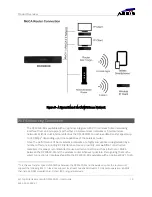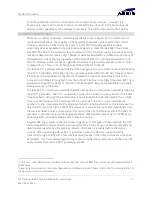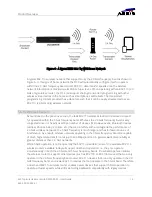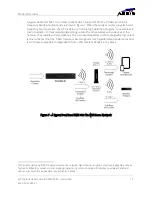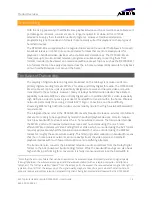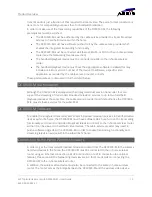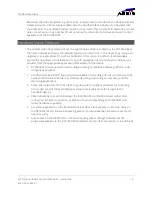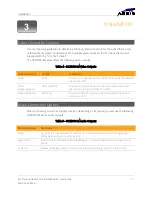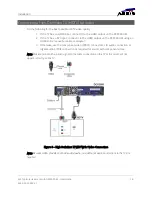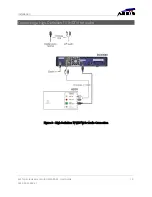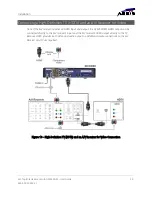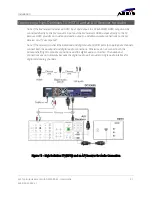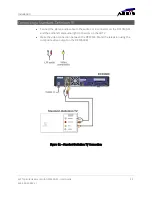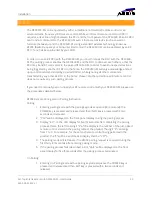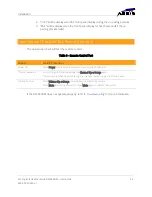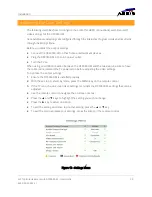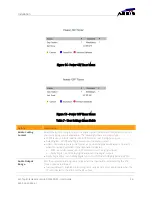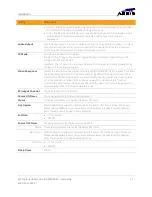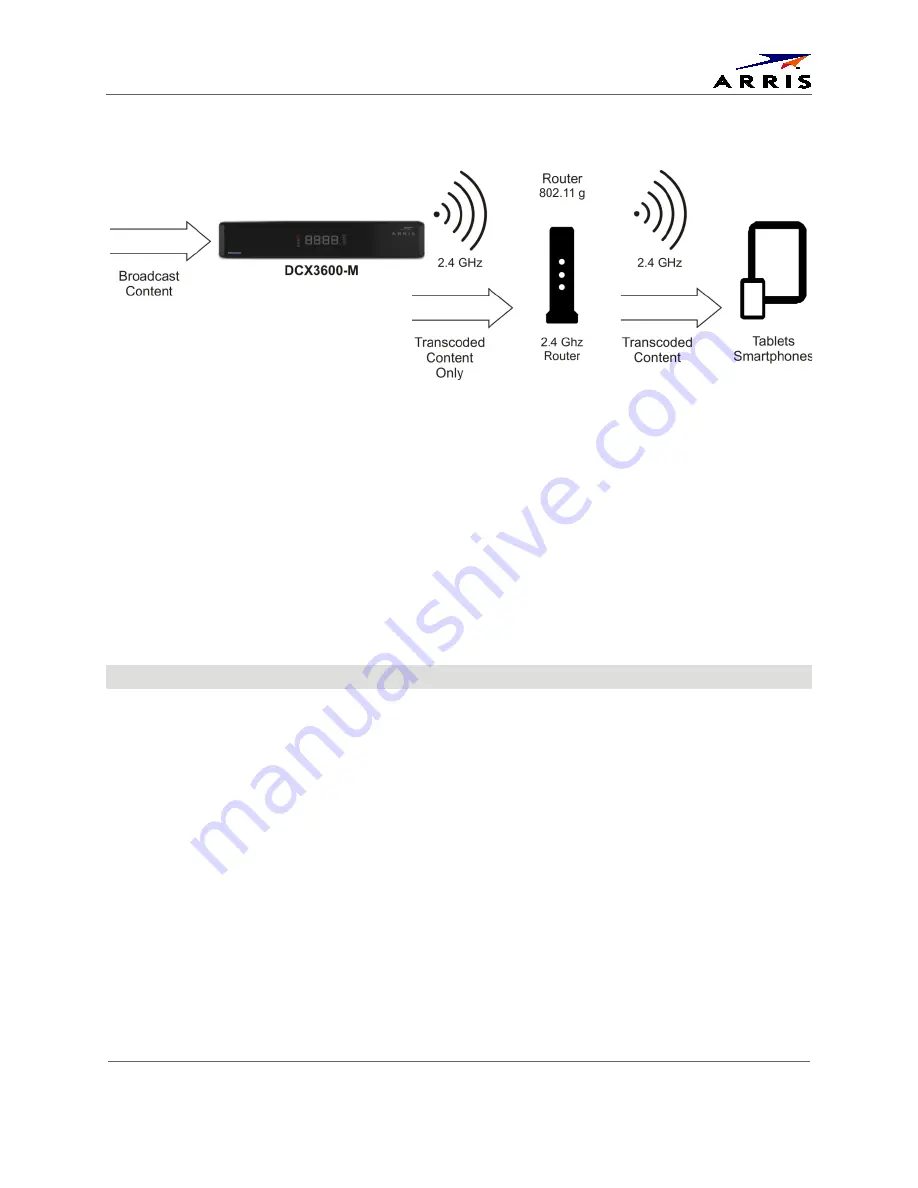
Product Overview
Set-Top Entertainment Hub DCX3600-M
•
User Guide
12
365-095-25659 x.1
Figure 6 - A Typical IEEE 802.11g WiFi Home Network
A typical 802.11n wireless network that supports only the 2.4 GHz frequency band is shown in
Figure 6. In this type of home network, the DCX will automatically configure itself to operate
within the 2.4 GHz frequency band and at 802.11n data transfer speeds once the wireless
network information is provided via its WiFi setup screens. When operating with an 802.11n (2.4
GHz only) wireless router, the DCX can support sharing transcoded programming with other
wireless video devices in the home such as smartphones and tablets. The transcoded
programming content provided has a data rate such that it can be easily streamed across an
802.11n (2.4 GHz only) wireless network.
5 GHz Wireless Routers
As mentioned in the previous section, the IEEE 802.11n wireless standard introduced support
for operation within the 5 GHz frequency band. Whereas the 2.4 GHz frequency band is very
congested since it is heavily used by a number of devices (microwave ovens, Bluetooth devices,
cordless phones, baby monitors, etc.) that can interfere with and degrade the performance of
2.4 GHz wireless networks, the 5 GHz frequency is much larger and has far fewer sources of
interference. As a result, wireless networks operating in the 5 GHz frequency band are capable
of much higher data transfer rates (up to 600 Mbps) and can in general work more reliably at
greater distances than 2.4 GHz networks.
While 5 GHz operation is not required by the 802.11n standard, most of the available 802.11n
wireless routers available today will support dual band operation, i.e., they can operate
simultaneously in both the 2.4 GHz and 5 GHz frequency bands. Dual band operation allows
the wireless router to support older devices (such as 802.11b or 802.11b devices) that can only
operate in the 2.4 GHz frequency band, newer 802.11n devices that can only operate in the 2.4
GHz frequency band, and newer 802.11n devices that can operate in the 5 GHz band. Therefore
a dual band 802.11n wireless router enables newer devices that support 5 GHz operation to
operate at faster speeds while still maintaining backward compatibility with legacy devices.













